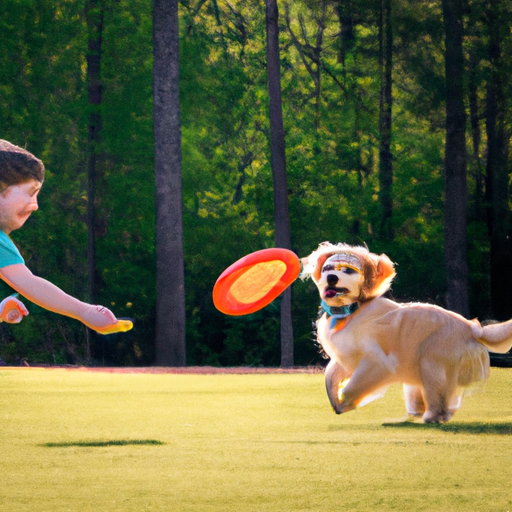Playing with your dog isn’t just about fun and games, it’s also an essential part of bonding, training, and overall health. Here are some comprehensive insights on how to play with your dog, ensuring both of you have a great time.
Understanding Your Dog’s Personality
First, understand your dog’s personality. Different breeds have different play preferences and energy levels.
- High-energy breeds: Labrador Retrievers, Border Collies, and Jack Russell Terriers, for instance, love activities that engage their bodies and minds.
- Low-energy breeds: Breeds like Basset Hounds and Bulldogs might prefer a leisurely game of fetch or a light tug-of-war.
Choosing the Right Toys
Next, choose the right toys. Not all dog toys are created equal.
- Interactive toys: These are great for mental stimulation.
- Chew toys: Ideal for teething puppies or dogs who enjoy a good gnaw.
- Fetch toys: Balls, discs, and bumpers are perfect for active breeds.
Remember to inspect toys regularly and replace any that are worn out or broken.
Engaging in Play
It’s time to engage in play. Here’s how:
- Initiate the Play: Start by grabbing your dog’s attention with the toy.
- Make it Interesting: Make the toy seem interesting by moving it around in an exciting way.
- Let Them Win: If you’re playing tug-of-war, let your dog win occasionally to keep their interest.
Knowing When to Stop
Knowing when to stop is crucial. Watch for these signs:
- Excessive Panting: This could mean your dog is too tired or overheated.
- Loss of Interest: If your dog starts to lose interest in the game, it’s time to stop.
- Aggression: If playtime ever turns aggressive, it’s time to take a break.
Incorporating Training into Playtime
Playtime can also be a great time to work on dog training. Here’s a simple table to demonstrate how:
| Game | Training Element |
|---|---|
| Fetch | Listening skills, “Fetch” and “Drop it” commands |
| Tug-of-War | “Let go” command, impulse control |
| Hide and Seek | “Stay” and “Come” commands |
Safety During Play
No matter how fun the game, safety should always come first.
- Check the area for any hazards such as sharp objects or small items your dog could choke on.
- Don’t let your dog play with toys unsupervised.
- Always provide access to fresh water during and after playtime.
Importance of Regular Play
Regular play is important because it:
- Provides exercise, keeping your dog physically fit.
- Strengthens your bond.
- Helps train your dog and improve their behavior.
- Reduces behavior problems such as chewing, digging, and excessive barking.
FAQ
Q: How long should I play with my dog each day?
A: It depends on your dog’s breed, age, and health. Generally, play times between 30 minutes to 2 hours are beneficial for most dogs.
Q: Can I play tug-of-war with my dog? Isn’t it aggressive?
A: Tug-of-war is a great game that dogs love. It’s not inherently aggressive. However, it’s important to teach your dog a “let go” command and to stop if the play becomes aggressive.
Q: My dog is older and has health issues. Can we still play?
A: Absolutely! Tailor your play to your dog’s ability. Short, gentle play sessions can be beneficial for older dogs. Always consult with your vet about what’s safe for your dog.
Remember, playtime is a special time between you and your dog. It’s all about having fun and creating a strong, loving bond that will last a lifetime.



